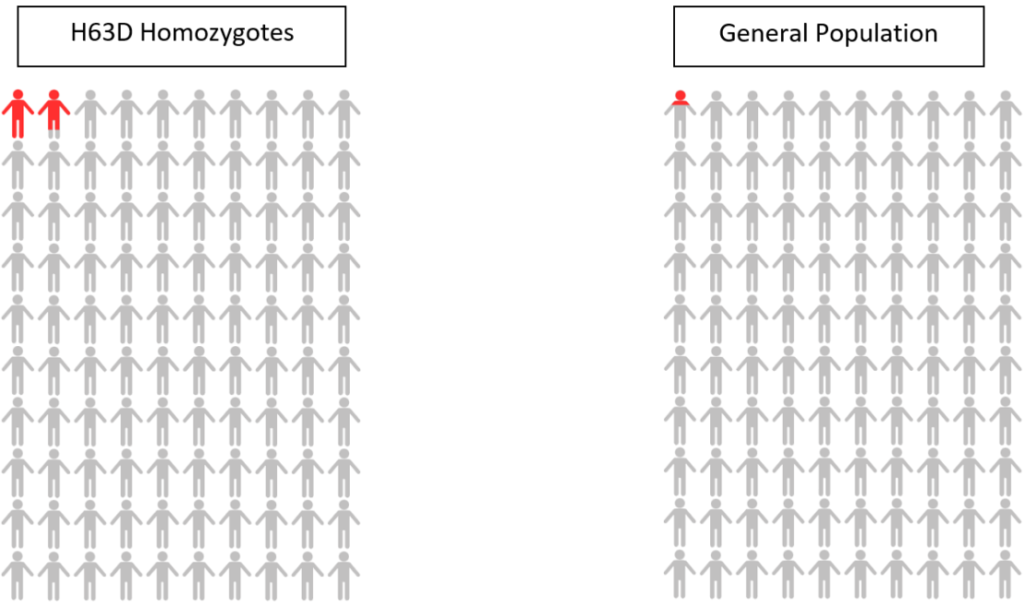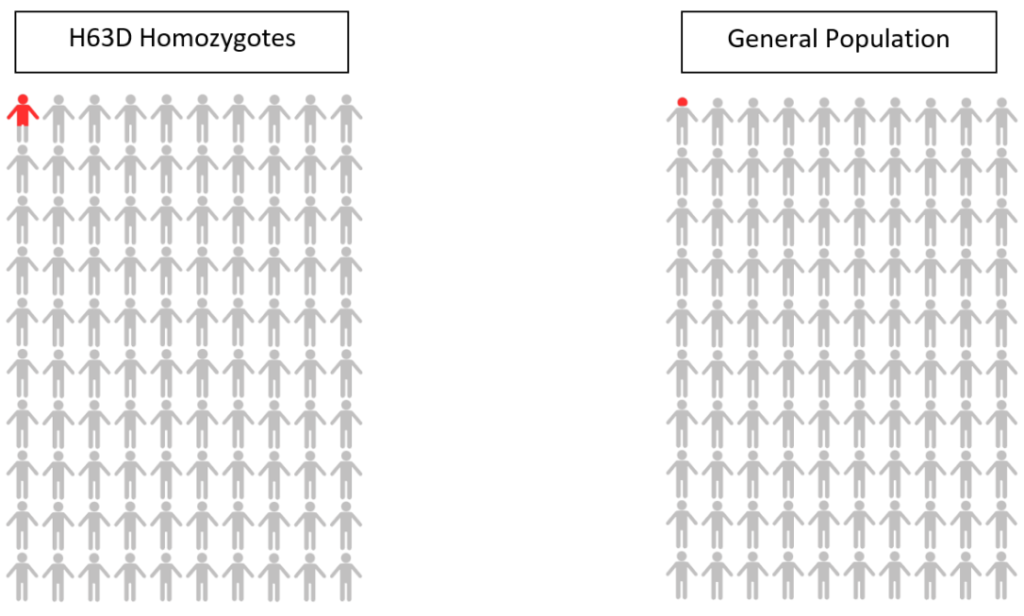Haemochromatosis: genetic iron overload disease
Summary for patients
Haemochromatosis: genetic iron overload disease
Summary for patients
You have two copies of the HFE H63D genetic variant.
* Estimates are from our community sample of UK Biobank European descent individuals [1]. People tested because of a health problem or with high iron levels may have different risk. See below Technical Details section for more information, and the Other Risk Factors page for risk modifiers. Page updated 12th February 2024.
Males are known to have higher risk of iron overload disease compared to females.
Haemochromatosis – We estimated that 1.9% of UK Biobank males with two copies of HFE H63D would be diagnosed with haemochromatosis by age 80, compared to 0.2% of individuals with no faulty HFE genes.

Risk of disease/mortality – In our study of mortality and disease risk to age 80 in UK Biobank, males with two copies of the HFE H63D genetic variant did not have increased risk of death or liver complications (including liver disease and liver cancer).
Haemochromatosis – We estimated that 0.6% of UK Biobank females with two copies of HFE H63D would be diagnosed with haemochromatosis by age 80, compared to 0.1% of individuals with no faulty HFE genes.

Risk of disease/mortality – In our study of mortality and disease risk to age 80 in UK Biobank, females with two copies of the HFE H63D genetic variant did not have increased risk of death or liver complications (including liver disease and liver cancer).
Because you have two copies of the HFE H63D gene variant, it is not likely you will develop haemochromatosis; therefore, if you experience symptoms, it is unlikely related to haemochromatosis, but you should contact your GP if they persist or become more severe. See below for guidance:
The UK NHS website for haemochromatosis (link) says to speak to your GP about getting a test if:
1. See below effect estimates for disease and mortality for male and female H63D homozygotes, note that all results are statistically non-significant:
2. Genetic differences among different populations can influence the risk of disease prevalence and rates of mortality. Therefore, the generalisability of our study findings may be limited to individuals of European descent.
3. Early follow-up years are liable to be impacted by healthy volunteer bias in the UK Biobank. However, the present study’s findings reported incident outcomes with sufficient follow-up time (median of 13.3 years), thus, limiting the influence of a healthy volunteer bias.
4. The current study does not take into account other genotypes that are known to influence iron metabolism. Therefore, the potential implication of such modifiable effects on iron could have affected any associated risks of disease or mortality. However, further research is required to determine the extent of such effects.
[1] Mitchell R Lucas, Janice L Atkins, Luke C Pilling, Jeremy D Shearman, David Melzer. HFE genotypes, haemochromatosis diagnosis and clinical outcomes at age 80: a prospective cohort study in the UK Biobank. BMJ Open. 2024; doi:10.1136/bmjopen-2023-081926
[2] UK NHS Haemochromatosis overview – https://www.nhs.uk/conditions/haemochromatosis/